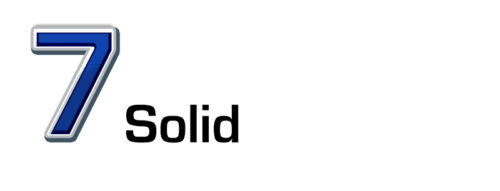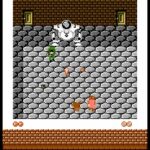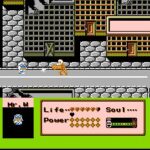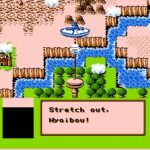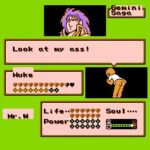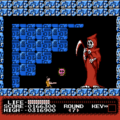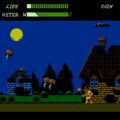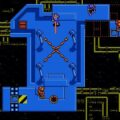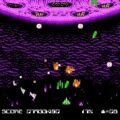Developer: Tose Publisher: Bandai Release: 02/15/89 Genre: RPG
Weekly Shonen Jump is an institution in Japan. Although there are dozens of manga anthologies in Japan even to this day it still remains the most popular. Their list of hits is a who’s who of the industry from Dragon Ball to JoJo’s Bizarre Adventure to recent smashes like My Hero Academia. In 1988 to celebrate their 20th anniversary Famicom Jump: Hero Retsuden was released. This mélange of various series was the first and most certainly would not be the last all-star crossover in their history. And obviously it never left Japan. To be honest even if it did most probably cannot name a quarter of the series represented in game. But that still does not mean you cannot enjoy this surprisingly solid RPG thanks to the fan translation.
Famicom Jump stars a young man who falls asleep while reading the latest issue of Shonen Jump. When he awakens he finds himself in a world comprised of many of the series he has been reading about. Now he must aid the various heroes in saving the world from an alliance of their deadliest villains led by the demon Piccolo.
The cast is gigantic even by modern RPG standards. There are sixteen from Jump series spanning from 1968 to 1988. Most will recognize Kenshiro, Goku, and Joseph Joestar. Lucky Europeans got Captain Tsubasa and Saint Seiya before the rest of the west. Dr. Slump, Kinnikuman, and City Hunter have either had anime or manga releases in the West. From there it gets obscure. You have gag series like Tsuide ni Tonchinkan, sports (Astro Kyūdan), high school delinquets (Sakigake!! Otokojuku), and hardboiled detective stories (Doberman Deka). NPCs pull from even more series out of the core sixteen so you get the point. In terms of fan service few games can beat this.
Although it greatly resembles Dragon Quest Famicom Jump has action based combat. The mechanics are simple: regardless of which hero you control everyone has a melee punch as well as a long range projectile of some sort. Ranged attacks require a brief recharge period between each use which differs between characters. As well the strength of melee hits differs depending on the hero. Having said that you will not notice the difference too much in practice.
While the fight mechanics may be simple Famicom Jump has a huge assortment of minigames that in some way relate to the heroes they represent. You will fight Raoh in a one on one battle, chase down Ryo from City Hunter in a Pac-Man like maze, play whack a mole, a mini shooter, race cars like Super Sprint, and even assist Tarou and Tsubasa in Baseball and Soccer matches. All told there are a whopping 15 minigames which for the time was unheard of. Surprisingly every single one is easy to learn and mechanically sound which is something most multi genre mash-ups still fail at today.
The World has five areas and while it is not stated each is based around a particular series. Obviously they chose the most popular ones and the fan service hits left and right. Area 1 is a truncated version of the battle against Raoh from Fist of the North Star. You will help Goku and Ryo take down the Red Ribbon Army in Area 2 and fight the Gold Saints from Saint Seiya in Area 3. Even though most are relegated to side characters with little beyond their initial recruitment everyone gets their time to shine in the game’s finale: a Dragon Quest style turn based tournament against the greatest villains from every series.
You spend the majority of the game building up your companions for the end game battles. There are two ways to do this. For every five random battles you complete with a hero they earn an effort point. These points do not play a role until the turn based battles at the end. Random battles are quick and easy. You only fight two enemies per battle and they are either melee or ranged attackers. With 16 characters it has the potential to be tedious. However it is a fast process and I rarely stopped to grind as it was not necessary. That is because almost every hero has one or two special items you will find that procures a massive power-up. These items are rewards for completing the few dungeons available. The game has a snappy pace outside of its lack of direction at times.
That is my one gripe with Famicom Jump. You receive few clues and it becomes more complex once you can travel back and forth through time freely. Townsfolk offer vague hints but a lot of it is guesswork. You can complete some events out of sequence and even skip some. Technically you do not have to recruit everyone but you will pay for it later if you do not. Each area is small enough that you will eventually stumble on what is needed to progress, be it a particular person or specific item. So while you will not be stuck long I still would have appreciated a little more guidance.
In Closing
I enjoyed Famicom Jump – Hero Retsuden immensely. Even though I am only familiar with a fraction of the series present it did not matter. The passion for these properties is evident and raises the game above being a fan service cash grab. It is not perfect but still good enough that I would still recommend it today.
